The CSG Justice Center has created two new resources for policymakers: 1) “Five Ways States Can Reduce Violent Crime”; and 2) snapshots for each of the 50 states on what the most up-to-date data show about trends in crime, arrests, behavioral health, workforce, recidivism and more. This article describes each part of the five-point plan. For state policymakers, staff at the CSG Justice Center is available to help unpack the data and dig deeper into how to improve community safety. Please contact the CSG Justice Center’s Madeleine Dardeau to learn more.
#1: Solve more cases of violent crime
 Nationwide, the number of violent crimes solved by law enforcement continues to decline. In 2022, no arrest was made in 63 percent of the violent crimes reported to law enforcement. According to the CSG Justice Center, research is clear that the certainty of getting caught — not the severity of punishment — is what can deter crime. Targeted state investments and grant programs can be used to:
Nationwide, the number of violent crimes solved by law enforcement continues to decline. In 2022, no arrest was made in 63 percent of the violent crimes reported to law enforcement. According to the CSG Justice Center, research is clear that the certainty of getting caught — not the severity of punishment — is what can deter crime. Targeted state investments and grant programs can be used to:
- Boost support and training for local police agencies, particularly those with low solve rates.
- Reduce detective caseloads.
- Improve law enforcement’s engagement with witnesses and victims. Illinois, for instance, funds a program that helps witnesses of violent crimes pay for relocation and housing-related expenses.
The CSG Justice Center also points to recent investments in the state of Ohio: more than $13 million for a Crime Lab Efficiency Program that aims to reduce and eliminate backlogs, decrease evidence processing times and upgrade lab technology.
Six years ago, the Utah Legislature established a statewide cold case unit (SB 160). Under the law, local enforcement must submit to a state-run database crimes that remain unsolved for three years. State investigators support the work in trying to solve these cold cases.
#2: Invest in data-driven violence prevention
About half of the nation’s violent crimes are never even reported to law enforcement. That fact points to the importance of having effective crime-prevention strategies.
 Legislatures can be a catalyst for this work.
Legislatures can be a catalyst for this work.
The CSG Justice Center singles out legislative-initiated work being done in the state of Washington: Researchers there were tasked with identifying the most cost-effective programs to prevent crime; the findings are now used to determine ongoing state investments.
As part of a statewide crime prevention strategy, the CSG Justice Center says, data-driven, evidence-based initiatives should target help for the communities most impacted by violent crime.
This can include increasing social and public health services, supporting culturally responsive violence reduction programs, and improving neighborhood infrastructures. In recent years, Illinois has allocated $250 million to the Reimagine Public Safety Act for this type of programming.
#3: Address trauma to prevent trauma
Illinois, Iowa and Ohio are among the 12 U.S. states that are home to at least one Trauma Recovery Center. The goal of this TRC model is to provide help to the survivors of violence. For example:
- evidence-based psychotherapy to target symptoms of distress and to increase interpersonal safety;
- clinical case management to address legal, housing, financial or medical needs;
- help for survivors in securing the victim-compensation benefits that they are eligible to receive.
“Ensuring that individuals experiencing trauma are connected to relevant support and resources is critical to breaking the cycles of violence,” the CSG Justice Center notes.
In late 2023, lawmakers in Michigan passed the bipartisan Crime Victims Rights Package. This suite of enacted bills includes HB 4420, a measure that allows police officers or prosecuting attorneys to share victims’ contact information with domestic and sexual violence service providers who can provide supportive services.
Also last year, the Minnesota Legislature established a $500,000 grant program to address the health and wellness needs of victims, and their families, who have experienced trauma.
#4: Set statewide goals to reduce recidivism
Earlier this year, Nebraska became the fourth U.S. state to join Reentry 2030, a national initiative to improve the reentry success for people with criminal records. Within a state, the initiative establishes specific goals to reduce rates of recidivism. It involves partnerships among state and local leaders in the justice, workforce, health and housing sectors.
 Among the new goals for Nebraska to reach by 2030:
Among the new goals for Nebraska to reach by 2030:
- Increase GED completion among incarcerated individuals by 30 percent and college coursework enrollment by 50 percent.
- Expand participation in vocational and life-skills programming by 25 percent.
- Ensure enrollment in Medicaid for all individuals who are incarcerated and eligible for this public health insurance program.
- Make sure all individuals who are incarcerated obtain state identification and birth certificates prior to release.
- Within 30 days of parole placement, at least 90 percent of individuals who are released from incarceration will be gainfully employed.
Nationwide, falling rates of recidivism point to progress and the impact of state-level policy changes. Still, 70 percent of people released from prison are re-arrested within five years.
#5: Improve justice data collection and use
A lack of sound data collection, reporting and analysis hampers efforts to improve criminal justice systems.
“You can’t fix what you don’t measure,” the CSG Justice Center says. “Data on crime, arrests, backlogs and punishments are hard to get.
“And despite an increasing focus on improving reentry outcomes, only half of states report data on outcomes for the millions of people sentenced to probation supervision.”
One option for states: Join the Justice Counts initiative, a nationwide coalition that is adopting a common set of metrics to provide key insights on trends, operations and outcomes in the criminal justice system.
The CSG Justice Center is leading this effort.
Iowa joined a handful of other states as a founding member of Justice Counts. Illinois and Wisconsin have secured federal grants to pursue the initiative’s goals.
The use of data also is central to the technical assistance provided to states via the Justice Reinvestment Initiative. In this region, nine states have partnered with the CSG Justice Center on this initiative: Indiana, Iowa, Kansas, Michigan, Minnesota, Nebraska, North Dakota, Ohio and Wisconsin.
The result has been the adoption of data-driven, evidence-based policies to improve public safety, save taxpayer dollars, reduce rates of recidivism, and help victims of crime.
The post Five strategies on how to address violent crime, with examples from the 11-state Midwest appeared first on CSG Midwest.



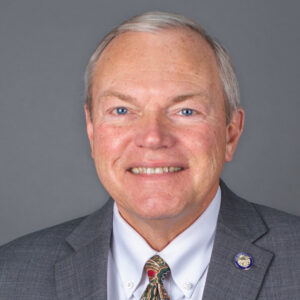 Innovation in workforce policy and development is the focus of the 2024 Midwestern Legislative Chair’s Initiative of Ohio Sen. Bill Reineke (pictured to the right). In support of the initiative, CSG Midwest is producing a series of articles, research briefs and policy sessions for the region’s legislators on this initiative.
Innovation in workforce policy and development is the focus of the 2024 Midwestern Legislative Chair’s Initiative of Ohio Sen. Bill Reineke (pictured to the right). In support of the initiative, CSG Midwest is producing a series of articles, research briefs and policy sessions for the region’s legislators on this initiative.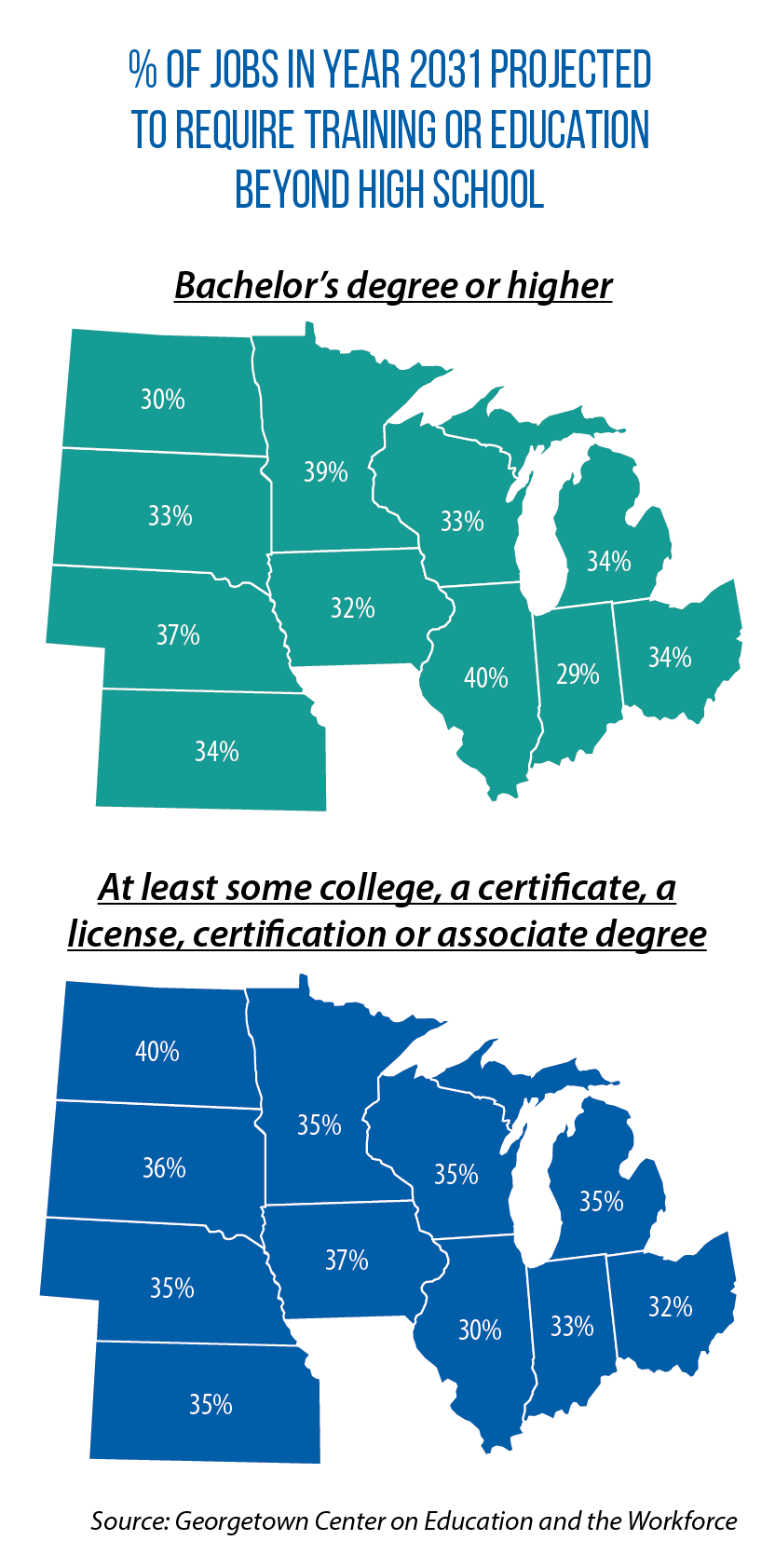 More jobs are requiring some postsecondary education and training beyond high school, a workforce reality noted in several of the governors’ recent speeches and proposals.
More jobs are requiring some postsecondary education and training beyond high school, a workforce reality noted in several of the governors’ recent speeches and proposals. Another feature of Iowa’s Future Ready initiative has been to invest more in
Another feature of Iowa’s Future Ready initiative has been to invest more in 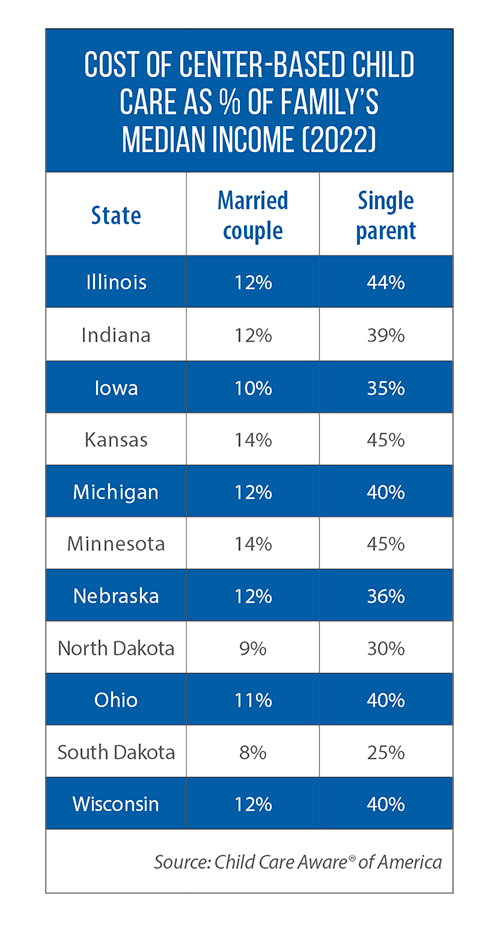 This model aims to remove some of the common infrastructure and operational obstacles faced by smaller-sized, family-based child care providers — for example, a lack of space to expand capacity in their homes or a lack of capital to build a stand-alone center.
This model aims to remove some of the common infrastructure and operational obstacles faced by smaller-sized, family-based child care providers — for example, a lack of space to expand capacity in their homes or a lack of capital to build a stand-alone center.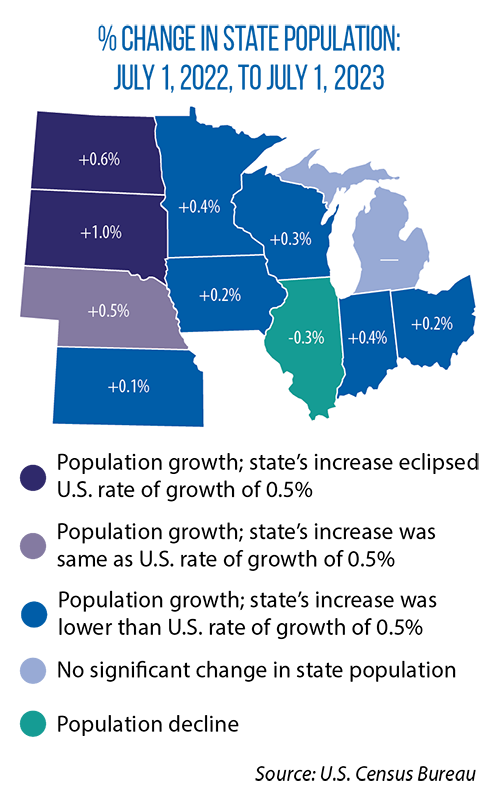 Pillen and Noem said part of their states’ strategies for alleviating workforce shortages should be to attract out-of-state talent.
Pillen and Noem said part of their states’ strategies for alleviating workforce shortages should be to attract out-of-state talent.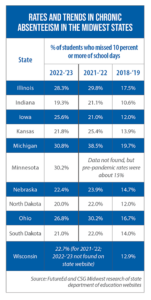
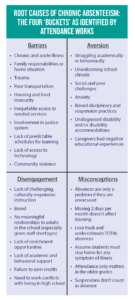
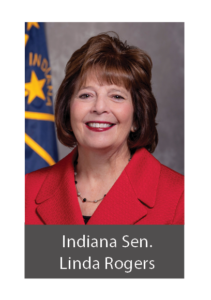
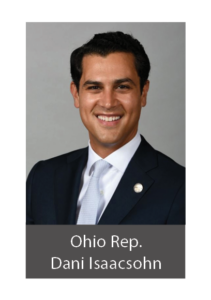

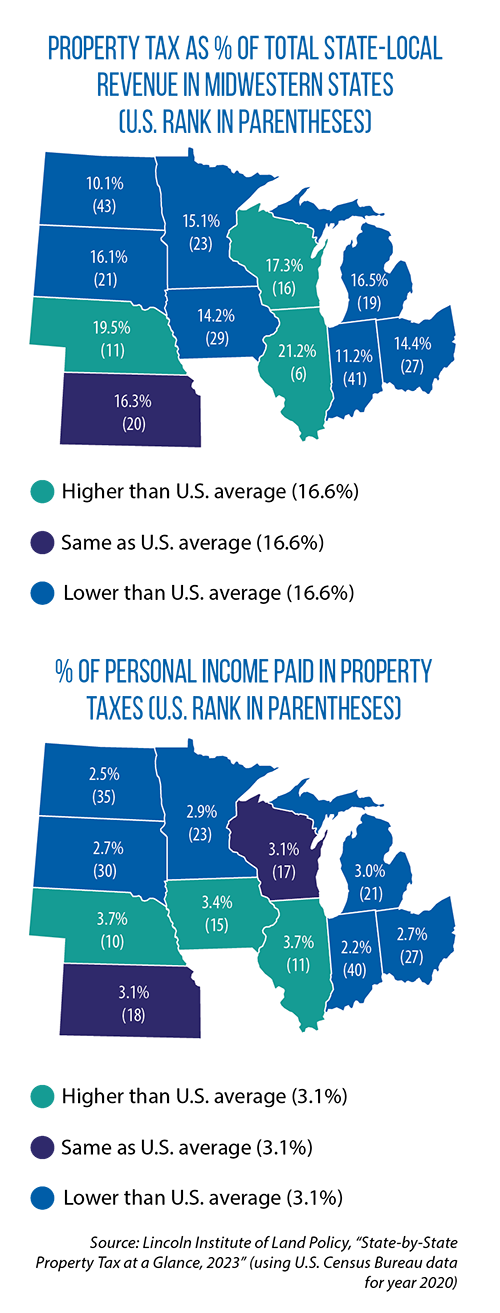 How much did you pay last year in property taxes? People are much more likely to know that answer compared to sales or income taxes, at least in part because the property tax typically is collected as a lump-sum payment and can total thousands of dollars.
How much did you pay last year in property taxes? People are much more likely to know that answer compared to sales or income taxes, at least in part because the property tax typically is collected as a lump-sum payment and can total thousands of dollars.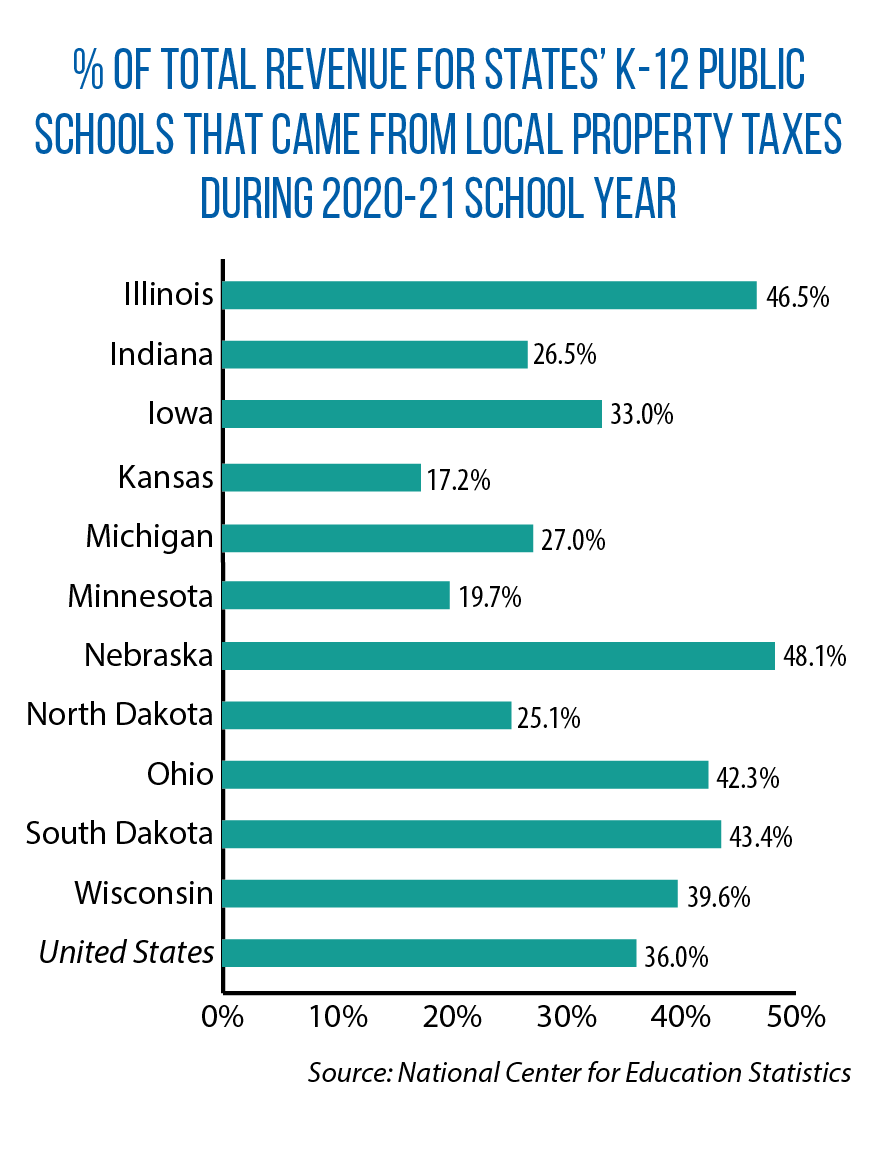 She adds that additional revenue sources from sales and other taxes should only be part of the solution. Linehan also wants harder, state-level caps that limit annual growth in tax collections by local governments; under her proposed
She adds that additional revenue sources from sales and other taxes should only be part of the solution. Linehan also wants harder, state-level caps that limit annual growth in tax collections by local governments; under her proposed  Establish assessment limits that cap how much a property’s value (for tax purposes) can increase from year to year. Under the
Establish assessment limits that cap how much a property’s value (for tax purposes) can increase from year to year. Under the  Michigan now explicitly bars political campaigns’ use of “materially deceptive media” generated by AI. This includes false depictions of candidates (things they didn’t say, actions they didn’t take) that intentionally harm their reputations or electoral chances. The new prohibition on “deep fakes” does not apply, however, if a “clearly visible” disclaimer alerts viewers that the image, audio or video “has been manipulated by technical means and depicts speech or conduct that did not occur.”
Michigan now explicitly bars political campaigns’ use of “materially deceptive media” generated by AI. This includes false depictions of candidates (things they didn’t say, actions they didn’t take) that intentionally harm their reputations or electoral chances. The new prohibition on “deep fakes” does not apply, however, if a “clearly visible” disclaimer alerts viewers that the image, audio or video “has been manipulated by technical means and depicts speech or conduct that did not occur.”
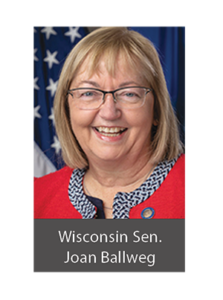
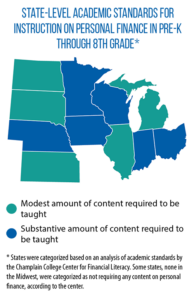
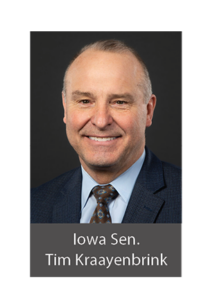
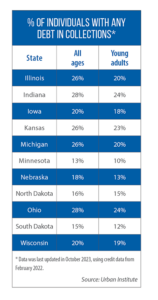
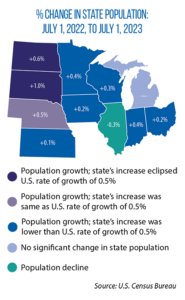 According to the U.S. Census Bureau, nine of the 11 states in the Midwest experienced population growth in 2023, with the lone exceptions being Illinois (decline of 0.3%) and Michigan (no statistically significant change). South Dakota and North Dakota had the region’s fastest rate of population growth; Indiana added the largest number of people among the 11 Midwestern states (nearly 30,000).
According to the U.S. Census Bureau, nine of the 11 states in the Midwest experienced population growth in 2023, with the lone exceptions being Illinois (decline of 0.3%) and Michigan (no statistically significant change). South Dakota and North Dakota had the region’s fastest rate of population growth; Indiana added the largest number of people among the 11 Midwestern states (nearly 30,000).